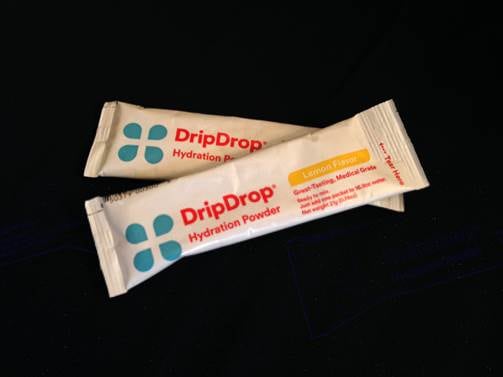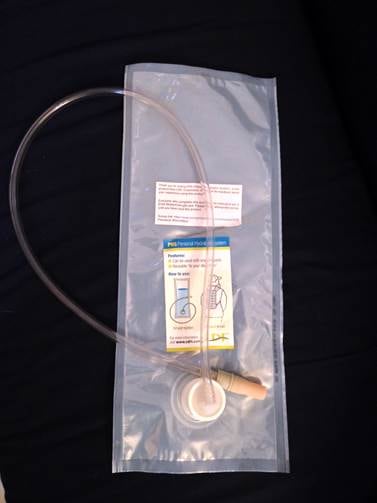![635582234386219818-MAR-From-BeaverFit-1 [ID=22595515]](http://www.gannett-cdn.com/-mm-/734fac10538d13406c1d7cd31ef155a9e07b4676/r=300x400/local/-/media/2015/01/30/GGM/MilitaryTimes/635582234386219818-MAR-From-BeaverFit-1.jpg)
CAMP PENDLETON, Calif. — Between the silencers, satellites, and missile systems that made up the bulk of the displays at the Marine West expo here Jan. 28 was at Camp Pendleton,everything that a Marine needs for a solid workout, from warm up to recovery.
With physical training PT a major part of life in the Corps, businesses see Marines and their penchant for fitness as a vital market. Marines are certainly buying — many of the products on display are headed to an installation or unit across the service. Here's what Marines can expect to see soon.
New Functional fitness containers
BeaverFit just unveiled a new "tactical gym box." Like the the company's older products, this one is a collection of functional equipment gear put into a shipping box. This version uses a five-foot container loaded onto a trailer so it can be moved without special equipment. It has kettlebells, medicine balls, dip attachments, jump platforms, battle ropes, rings, two squat stations, a 20-foot climbing rope, several pull-up bars, and gear for Olympic lifting.
"It's basically a [high intensity training] box," said Alex Roodhouse, a former Navy riverine and one of the company's partners. "You open it up and it's like the best Christmas present ever."
Thirty people can use it at once, he said.
Their older products also rely on shipping containers, and Roodhouse said they've sold 120 of them across the Corps, Roodhouse said, including units used in the Marine High Intensity Tactical Training program.
While new, the portable five-footer is already getting interest. Roodhouse said he's spoken to installations that are interested in purchasing the new system, and then checking it out to units who might be at the range or in a field exercise where they don't have access to a gym.
MARSOC's gets new drink

Already used by East Coast Marines and the Marine Corps Forces Special Operations S hool, Drip Drop is trying to get West Coast Marines to use its powdered hydration mix.
Photo Credit: Joshua Stewart/Staff
Hydration, of course, is crucial. After officials at the Marine Corps Forces Special Operations School at Camp Lejeune, North Carolina, decided to use Drip Drop's Oral Rehydration Solution during the individual training course, the company Drip Drop is trying to get other parts of the Corps to use the drink powder as well.
Gregory Sumerlin, the director of military sales for the company, said it rehydrates faster than sport drinks because it has a lower osmolarity — the number of particles dissolved into a solution. Gatorade lists says its osmolarity is around 360, according to its website. Sumerlin said his product is around 235, so sodium, potassium and magnesium are absorbed faster, and it takes less time to recover during rigorous training, he said.
Sumerlin said that Navy SEALS, Army special operations, and Marines at Camp Lejeune use the drink, but he's trying to expand to the West Coast. The MARSOC School started using the powder in In January, Marine Special Operations School started using the powder, and it's given to students daily.
The drink was developed by Dr. Eduardo Holhun, a physician who saw patients die of dehydration in Guatemala. He later became frustrated when giving them rehydration drinks didn't taste good, so he started developing Drip Drop in order to encourage them to drink more fluids.
Cheaper, disposable, hydration system
CDF has also developed a very different hydration product to help hydrate Marines. The company specializes in sealed plastic bags to securely ship fluids but is now trying to break into the hydration reservoir industry. They've created a low-cost and disposable bladder to fit inside CamelBak, Osprey and other hydration packs.
"It's a less expensive option" said Jimmy Bigg, an applications engineer with CDF.

CDF has developed a disposable hydration system. The device can hold three liters, fits into regular hydration packs, and is designed to be discarded after a few uses.
Photo Credit: Joshua Stewart/Staff
His company's bladders look and work like many other hydration systems on the market, but CDF wants users to use their product just a few times before throwing it away. It's different from higher-end systems that are used, washed, dried and re-used indefinitely.
Since it's disposable, users can fill the three-liter reservoirs with a sports drink without worrying that it will become sticky, nor do they have to worry about mold growing in the system's drinking tube, Bigg said.
The bladder has double-plastic walls made of a BPA-free material. The reservoir is filled by unscrewing the hose from the base, filling the bladder with water, and re-attaching the hose. The opening is too narrow for scoops of ice, but is wide enough to fill with ice cubes one at a time.
They're not on the market yet, but CDF's bladders will cost between $10 and $15 for a three-pack that comes with one reusable tube and nozzle. Platypus, Osprey, and CamelBak-brand reservoirs of the same size go for about round $35 online. Compared to other reservoirs on the market, CDF's plastic is less isn't as rigid, and its opening is too narrow for scoops of ice.
Bigg said his company is trying to get the hydration systems on shelves at military exchanges.
